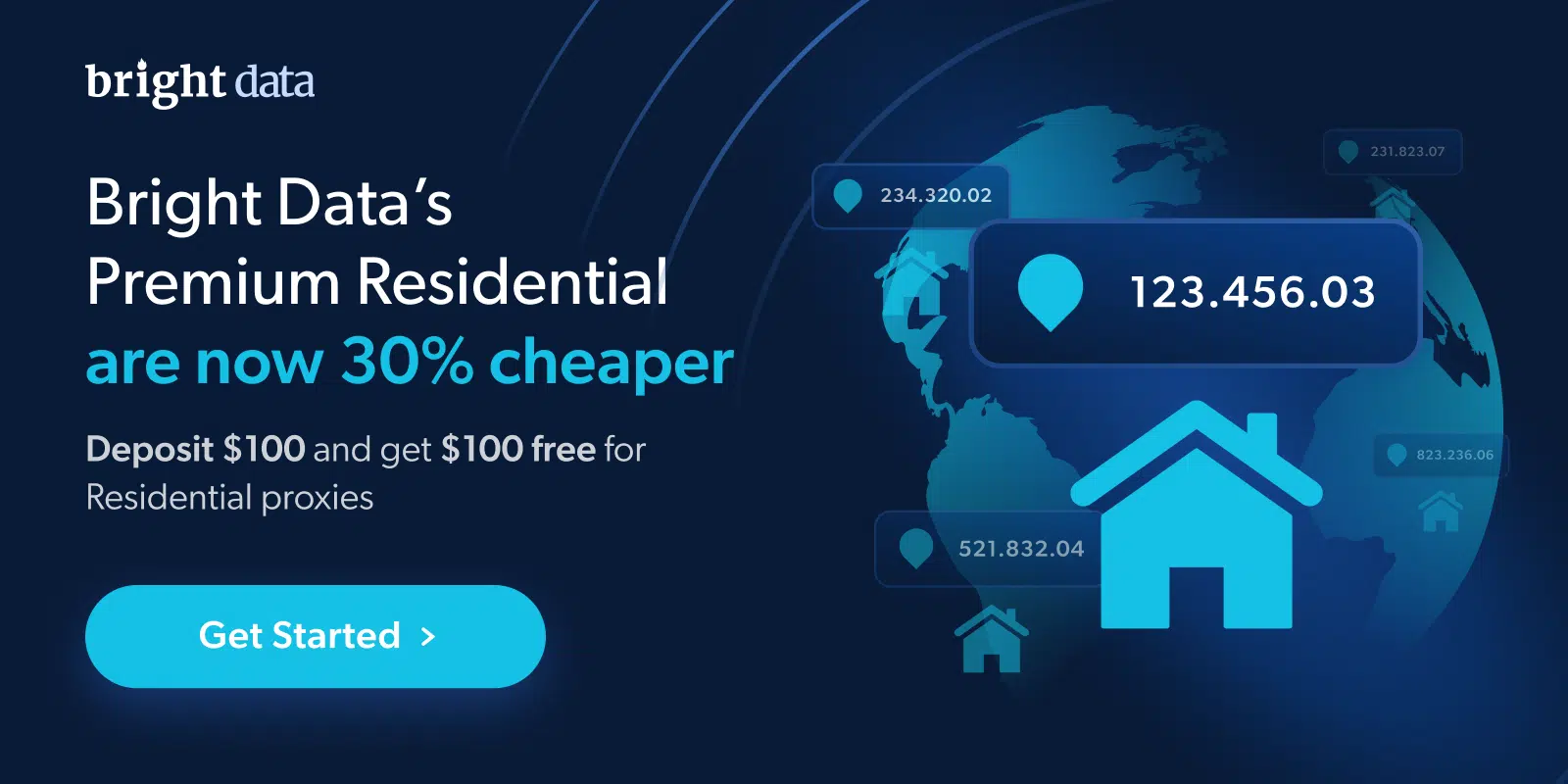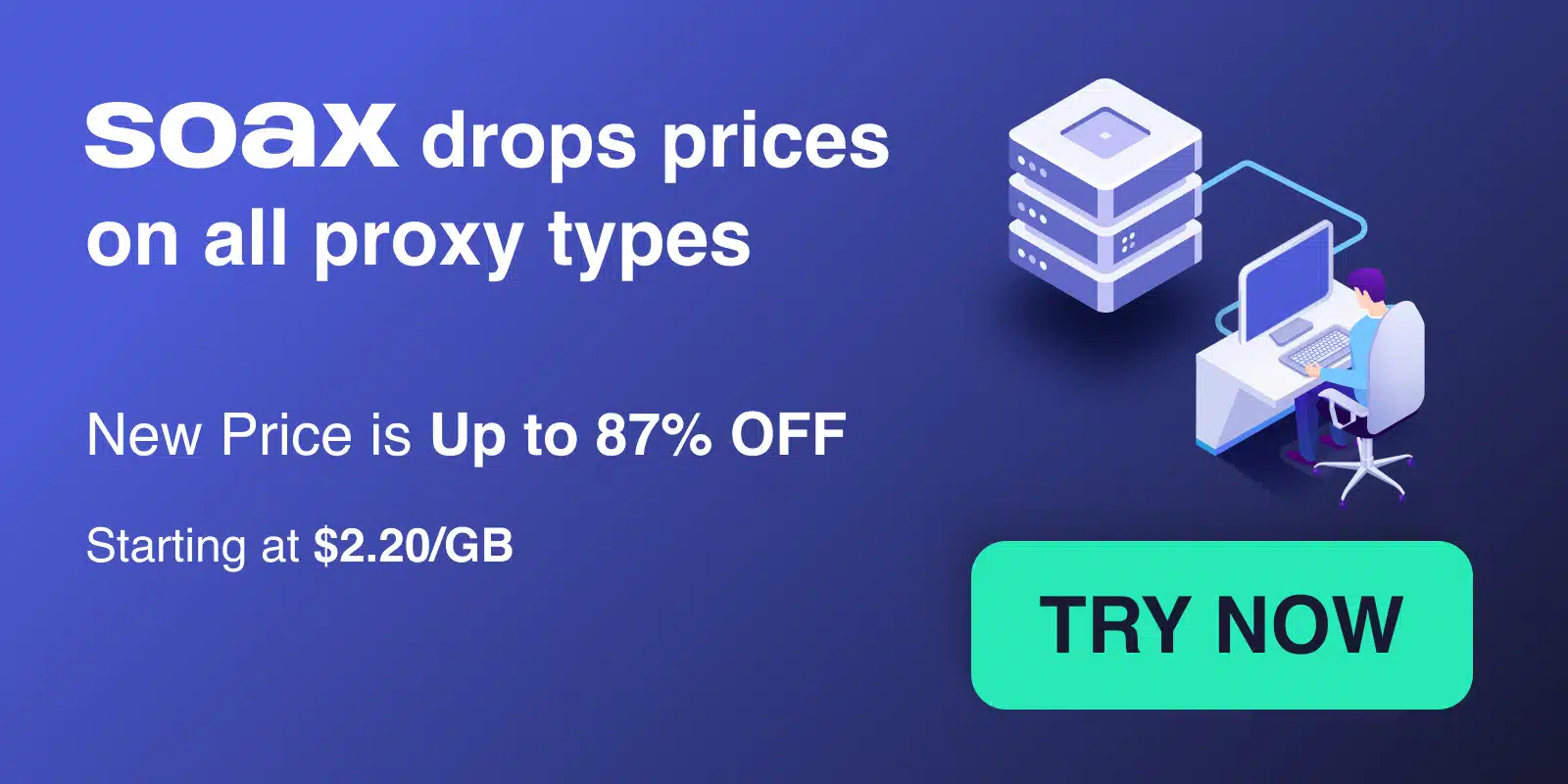Data is the lifeblood of the digital economy – but turning the vast amount of data available online into accessible, actionable insights requires the right tools. This comprehensive guide will explore the top data extraction (aka web scraping) tools available in 2024 to help you make sense of the web‘s endless sea of unstructured data.
Whether you‘re a business leader seeking competitive intelligence, a researcher mining datasets for analysis, or a developer tasked with scraping data for an app, this guide will cover the leading solutions available – with expert insights to help you select the right platform for your needs.
The Growing Importance of Data Extraction
The volume of data generated online is mind-boggling. According to Domo‘s Data Never Sleeps analysis, over 2.5 quintillion bytes of data are created on the internet each day. Unfortunately, the vast majority of this data is unstructured and siloed across millions of webpages, PDFs, social feeds and more.
This is where data extraction enters the picture. Data extraction tools programmatically gather targeted information from across the web and import it into structured formats like CSVs or databases so it can be easily analyzed.
According to ResearchAndMarkets.com, the global web scraping services market is projected to grow from $3.36 billion in 2024 to over $8 billion by 2029. This shows the soaring demand from companies to leverage web scraping for use cases like:
- Competitive pricing research across product sites
- Building machine learning datasets
- Social listening and reputation monitoring
- Early warning for cyber threats
- Real estate and job listings aggregation
- eCommerce inventory monitoring
- News and content harvesting
For most organizations, the insights unlocked by properly leveraging web data extraction tools lead to major competitive advantages – from optimized pricing to reputation management and beyond.
Key Benefits of Data Extraction Tools
Manually extracting data from websites is extremely tedious and labor-intensive. Web scraping tools provide the following benefits:
Speed – Extract thousands of data points faster than any human could.
Scale – Crawl entire websites and databases to extract complete datasets.
Automation – Schedule recurring extraction jobs to keep data updated.
Customization – Extract precisely the datasets needed, no more and no less.
Formats – Structured outputs like JSON, CSV, SQL, XML and more to power analysis.
APIs – Integrate extracted data seamlessly into business intelligence tools.
Let‘s explore some real-world examples of these benefits in action:
-
A retailer utilized data extraction to monitor competitors‘ pricing across thousands of products each day, empowering it to dynamically align its pricing for a 12% increase in profitability.
-
A cybersecurity firm uses automated scrapers to monitor dark web sites for early warning signs of data breaches, reducing incident response time from days to hours.
-
The Internet Archive nonprofit runs petabyte-scale web crawlers to preserve websites and make their data searchable for researchers.
These examples showcase the power of data extraction at scale across industries – from commerce to cybersecurity and beyond.
Key Criteria for Evaluating Data Extraction Tools
However, not all data extraction tools are created equal. When researching options, here are the key criteria to consider:
Learning curve – What level of technical skill is required? Can non-developers use the tool?
Customization – How much flexibility for configuring scrapers? Can extraction logic be tailored to your needs?
Scale – What data volumes can the tool handle reliably? Does it offer infrastructure to support large, distributed crawls?
Blocking resilience – Are effective measures like proxies, random delays, and mimicry of human behavior supported to minimize blocking?
Data formats – What type of structured outputs are available? SQL, JSON, XML, CSV, etc.
Pricing – What is the pricing model and how much do key features cost? Are there usage limits?
Support – Is responsive technical support and guidance available if needed during setup?
Ease of use – How intuitive is the user interface? Is the tool easy to use for all team members?
Let‘s explore the top data extraction tools and how they stack up across these criteria:
Top Data Extraction Tools for 2024
Bright Data
Overview
Bright Data offers a highly capable web data extraction platform designed for large scale processing and flexible integration. Its core offering is a pool of 72 million residential proxies that rotate to minimize IP blocks during large scraping jobs.
Bright Data also provides a graphical web scraper interface called the Web Scraper IDE that allows both coding beginners and experts to develop and configure scrapers. It provides tools to handle complex sites, captchas, browsers, and more.
Key Features
- Point-and-click scraper configuration
- Millions of rotating proxies to avoid blocks
- HEADLESS browser extraction
- Tools to bypass anti-scraping measures
- Scheduled recurring extractions
- SQL, JSON, XML, CSV outputs
- On-demand custom scraping solutions
Best For
Bright Data shines for large-scale projects thanks to its robust proxy infrastructure and advanced tools for tackling the challenges of extracting web data at scale.
Pricing
Bright Data offers monthly subscription plans starting at $500/month for 5 million page views. Enterprise pricing is customized.
ParseHub
Overview
ParseHub is a web data extraction tool requiring no coding, ideal for non-technical users. Its visual interface allows users to model and extract data from sites by selecting elements on sample pages. Under the hood, ParseHub automatically generates scrapers based on these configurations.
Key Features
- No coding skills required
- Point-and-click visal configuration
- Automatically detects site patterns
- Extracts text, URLs, images, files
- Browser extensions for scraper creation
- 200 page/40 min limit on free plan
Best For
ParseHub is the leading web scraping solution for non-developers, though advanced users may find it limiting. The free plan allows small scale extraction.
Pricing
ParseHub offers personal plans from $59/month to $399/month with expanded page limits. Team plans start at $899/month.
Octoparse 8
Overview
Octoparse is an end-to-end web scraping and data organization solution accessible through point-and-click configuration, requiring no coding. It allows users to extract, structure and export web data.
Key Features
- Intuitive visual interface
- Extract data from any part of a webpage
- Tools for cleaning and structuring data
- Scheduling, monitoring and export options
- Support for pagination, filters, scrolling sites
- 14-day free trial
Best For
Octoparse strikes a strong balance between an intuitive interface for beginners and advanced configuration options for power users.
Pricing
Octoparse offers monthly plans starting at $99 for individuals and $499 for teams. Enterprise quotes available on request.
Scrapy
Overview
Scrapy is a popular open-source framework for writing web spiders/scrapers in Python. It is designed to give developers full control and customization for complex data extraction jobs.
Key Features
- Open source Python library
- Broad functionality for complex scraping
- Powerful extraction capabilities
- Challenging learning curve
- Free and open source
Best For
For technically skilled developers needing maximum customization capability, Scrapy provides excellent foundations. Existing Python skills are highly beneficial.
Pricing
As an open source framework, Scrapy is free to use. It must be self-hosted on infrastructure capable of distributed scaling.
Apify
Overview
Apify is a web data extraction platform built for scale and performance. It enables writing scrapers in any language while providing pre-built solutions and actor-based distributed crawling.
Key Features
- 1,000+ pre-built scrapers for many sites
- Own scrapers can be hosted
- Integrated with open-source Crawlee scraper
- Scalable actor architecture
- API access and automation
- Free and paid plans
Best For
Apify excels for developers wanting maximum scale and performance, especially to leverage existing scrapers while retaining code flexibility.
Pricing
Apify offers a free plan. Paid plans start at $49/month for 5,000 page views including shared infrastructure.
Diffbot
Overview
Diffbot uses AI and computer vision techniques to automatically extract structured data from webpages without needing upfront configuration or training.
Key Features
- AI-powered data extraction
- No training required
- Targeted models for articles, products, jobs, etc.
- 10,000 API calls for $0 on free plan
- High accuracy for common schemas
Best For
Diffbot simplifies extraction when webpages follow conventional layouts and schemas that its AI can reliably interpret.
Pricing
Diffbot offers a free "starter" plan. Paid plans start around $299/month. Enterprise custom pricing available.
Key Factors When Selecting an Extraction Tool
With many data extraction tools to choose from, here are the key factors to consider for your project:
Audience Skill Level – If non-technical team members need to configure/run scrapers, prioritize tools like ParseHub with visual interfaces. For advanced custom jobs, developer libraries like Scrapy provide more control.
Project Scope – Small one-time jobs may work with free or low-cost tools. Large or complex recurring jobs typically benefit more from enterprise-grade solutions.
Expected Data Volumes – If extracting high volumes, tools like Bright Data with robust infrastructure are preferable.
Blocking Risk Tolerance – Highly visible sites often block scrapers, so tools with proxies, mimicry measures are crucial.
Need for Customization – Out-of-box solutions like Diffbot work for conventional data. Unique schemas may require more customizable libraries like Scrapy.
Output Destinations – If data must feed directly into databases or apps via APIs, ensure compatible data format options.
Budget – Weigh the projected value of data extraction against tool costs to ensure sufficient but cost-effective capabilities.
Organizational Support Available – If undertaking initial implementations, vendors with training resources and consultation services provide helpful guidance.
Evaluating these factors will help determine which solutions may be the optimal fit for particular organizational needs and constraints.
Getting Started with Data Extraction
Once you‘ve chosen a web data extraction tool, here are best practices to launch your first scraping project smoothly:
-
Start small – Begin with a simple website or use case to learn ropes before tackling more complex sites at scale.
-
Review regulations – Ensure scraping falls within a website‘s terms of service, copyright law, and local privacy regulations.
-
Anonymize activity – Use random delays, proxy rotation, and other measures to disguise scrapers as human activity. This helps avoid blocks.
-
Focus extraction – Only extract datasets needed for the project goal – while avoiding over-scraping sites.
-
Clean extracted data – Deduplicate records, normalize formats, fill in gaps, etc. to prepare data for downstream usage.
-
Store data securely – Encrypt data and restrict access to safeguard scraped datasets.
-
Automate recurring jobs – Schedule recurring extractions to keep datasets fresh through incremental updates.
-
Monitor operations – Actively check extraction logs to spot any errors or blocking issues needing address.
-
Refine over time – Continuously improve extractor performance and data quality based on project learnings.
Adhering to these tips early on helps organizations thoughtfully ramp up data extraction capabilities while avoiding common pitfalls.
Real-World Examples of Data Extraction Use Cases
To better understand the tangible business benefits unlocked by web data extraction tools, let‘s look at some real-world examples across different industries:
Competitive Intelligence
A management consulting firm needed to closely track competitors‘ offerings and pricing. By building scrapers tailored to each competitor site, they extracted updated product catalogs and pricing nightly. By ingesting this competitive intelligence into internal systems, they accelerated proposal development by 27% and won 15% more deals.
Attribution Monitoring
A major news publisher needed to detect instances of blog and site owners republishing full articles without permission or attribution. By crawling recipe sites and aggregators, instances of full-text copying could be identified via extraction tools and appropriate attribution requested. This increased proper citations by 44%.
Inventory Monitoring
A clothing retailer selling across multiple online channels needed to closely monitor real-time inventory changes during peak sales periods to minimize stock-out risks. By extracting inventory counts from their own ecommerce site as well as third-party channels hourly, restocking and fulfillment could adapt in real-time, reducing lost sales by 8%.
Clinical Trials Research
A medical research non-profit needed to gather and analyze data on clinical drug trials across multiple public databases and records in order to identify promising candidates stalled in development. Data extraction tools gathered dispersed trial data in aggregate for analysis, unlocking 10 potential therapies for rare diseases.
These examples demonstrate just a subset of the use cases and competitive advantages unlocked for organizations across industries by leveraging web data extraction tools in impactful ways.
Ethical and Legal Considerations for Data Extraction
While data extraction delivers immense value, it also warrants careful attention to ethical practices and legal compliance:
-
Respect Robots.txt – This file outlines which parts of a site the owner allows scraped. Avoid violating terms.
-
Review Terms of Service – Understand site terms, including any restrictions on scraping volume or usage of collected data.
-
Don‘t overextract – Collect only the minimum data needed for the intended business purpose to avoid unnecessary load on sites.
-
Attribute properly – When republishing scraped data, properly cite sources as you would with any other third-party data reuse.
-
Secure data – Store scraped data securely just as you would any confidential business data, with access controls.
-
Assess public impacts – Consider if extracted data at scale could pose risks of abuse or misuse if made public.
Ultimately, the open web thrives on making data accessible. When using scrapers responsibly, it unlocks tremendous mutual value.
Key Takeaways
-
Data extraction tools empower analysts, researchers and business leaders to unlock insights from the web‘s vast silos of unstructured data across virtually any industry.
-
Leading platforms such as Bright Data, ParseHub, Octoparse and Apify provide intuitive interfaces to configure extraction jobs without coding at scale.
-
For advanced custom jobs, developer libraries like Scrapy provide maximum control but require significant technical expertise.
-
When selecting a scraper solution, carefully weigh key criteria such as audience technical skills, project volume and complexity, blocking resistance, integrations, and customization needs.
-
Adhering to ethical practices such as respecting sites‘ terms, scrubbing collected data, and securing it properly ensures responsible and sustainable value generation through data extraction.
The possibilities to utilize web scraping are vast – with the right platform, expertise, and strategic vision, any organization can tap into this trove of publicly accessible data to uncover game-changing insights. The tools explored in this guide can fuel this engine of competitive advantage for enterprises today and tomorrow.


